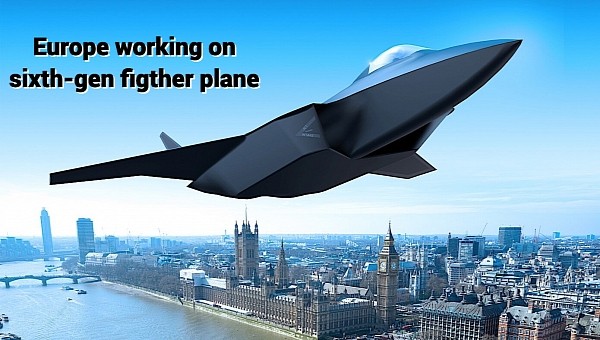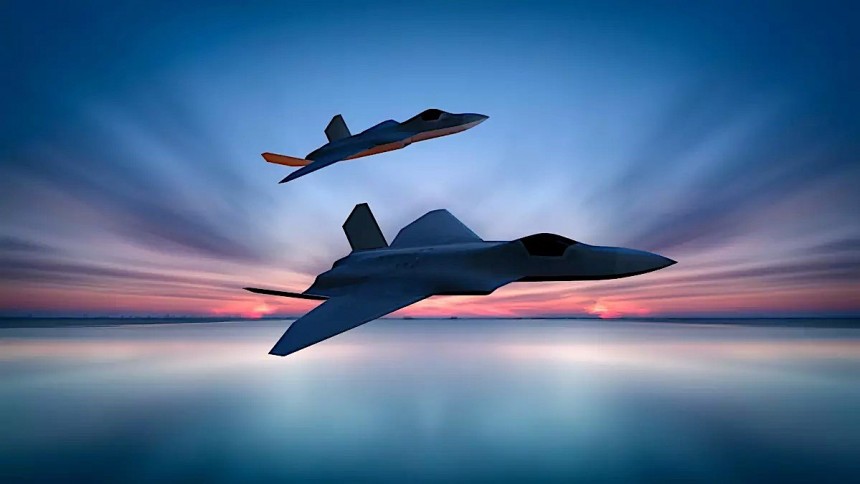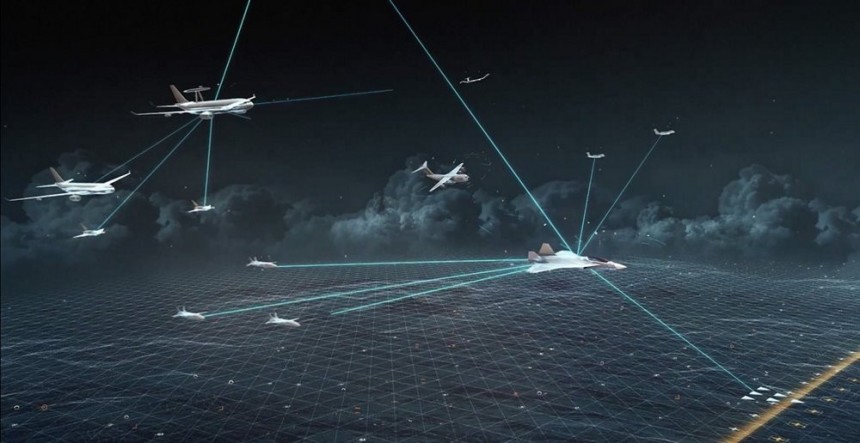The world of military aviation is a rapidly evolving one. Sure, you may be tricked into believing it’s quite the opposite, given how many of the assets currently in use are several decades old, but when it comes to these things, age is relative and ultimately unimportant. What matters are capabilities.
When saying a fighter plane is old, we mostly refer to its basic design. In most cases, as years pass and technologies evolve, many of these planes get seriously updated all over, aside perhaps from the overall shape and maybe the engines.
Making a new military aircraft is a complicated and expensive business, and this is why updating existing machines usually takes precedence over designing new ones. But there’s only so much one can do to keep a fighter or a bomber relevant, and from time to time we do happen to get new machines in the sky.
In the long history of military flight, there have been just five generations of fighter planes. We’re talking here about fighter jets, of course, as the veterans of the Second World War, piston- and propeller-powered aircraft, have never been taken into account.
The first fighter jet generation is reserved for the somewhat experimental planes of the late 1940s. Still incapable of going supersonic, they employed some kind of jet power and were armed with the conventional weapons of the era, from machine guns to various bombs. This is the time when Germany gave birth to the Messerschmitt Me 262, the first ever jet-powered aircraft we humans have ever built. Further to the East, Russia was playing around with the BMW-powered MiG-9, while across the ocean, in the U.S., the Lockheed P-80 Shooting Star, the American military’s first fighter jet, was making a spectacle in the sky.
The rapid adoption of jet engines, doubled by the start of the Korean War, brought about the second-generation fighter jets, those of the early 1950s. This is the decade when such machines became more commonplace, but, more importantly, they started going supersonic. It’s the era of the North American F-86 Sabre, the mighty MiG-15, or the lesser-known Dassault MD.454 Mystère IV. It was also a time when military aircraft started getting radar for tracking and air-to-air missiles for fighting, bringing new capabilities into the hands of the pilots.
Impressive as they may have been, all these planes and others like them were quickly replaced by the third-generation fighters, arriving en force about halfway through the 1950s, in the form of things like the American F-4 Phantom II, Russian MiG-23, or French Mirage F1. This breed of airplanes started blending fighter roles with bomber duties, giving birth to the true multi-role machines, and differentiated themselves from what came before through better engines and improved handling.
All of the above generations had one thing in common: the world burned through them quite rapidly, as new technologies became available. As you can see, the time distance between the first and third-gen planes is less than two decades. Compare that with the distance that separates the 4th gen of the 1970s with the 5th gen that only started to pop up in the 2000s, and you really start to get a sense of how important updating planes became over the years.
The fourth generation of the world’s fighter jets is the richest and most successful that’s ever been. Building on the previous version, these planes added to the mix incredible maneuverability, new avionics, improved weapons, the concept of stealth invisibility, and pretty much everything an airplane would need to destroy its target and survive the mission.
As the most successful airplanes in existence, four-gens are still in the skies of our today, in the form of F-16 Fighting Falcons or F/A-18 Hornets on the American side, MiG-29s, MiG-35s, and Sukhoi Su-30 playing for the Russians, and the Eurofighter Typhoon serving the Europeans.
We’re now smack down in the middle of the fifth generation, with just four representatives on a global level to show for: the American F-22 Raptor and F-35 Lightning, the Chinese Chengdu J-20, and the Russian Su-57. For what it’s worth, that’s probably all the members this generation will ever get, as most nations of power in this world are already pondering the next fighter planes.
While America burned through all five fighter plane generations and is now gearing up for the sixth, in the form of the Next Generation Air Dominance (NGAD), Europe, which is currently using American F-16s and F-35s on a large scale, is going straight for the sixth.
It was back in 2017 when then-German Chancellor Angela Merkel and French President Emmanuel Macron announced the birth of the European Air Defence System. It includes something called the Future Combat Air System (FCAS), which in turn is made up of a sixth-generation airplane (so far called Global Combat Air Program), drones, and a combat cloud, among others.
FCAS is actually a multinational project and involves Airbus and Dassault Aviation as prime contractors. The makers of planes like the A380 and A320 are tasked with working on the drones (something called Remote Carriers) which will be teaming up with the airplane in the sky, but also with the troops on the ground.
Airbus is already at work testing the Remote Carriers, with Do-DT25 drones launching from an A400M Atlas starting last year. In the future, these drones will launch in swarms (either 50 small or 12 heavy drones) from carrier aircraft like the Atlas, in support of ground troops and friendly aircraft.
Dassault will handle the actual Global Combat Air Program plane itself, aided in its mission by a series of companies and government entities from the UK, Italy, Spain, and even Japan.
The details of the airplane project are not known in full, especially given how Europe does not plan to have it ready for duty before the end of this decade, but we can all expect the plane to pack most of the technologies used in the current fifth-gen aircraft, as well as new ones. That means stealth, connected, and armed with the most modern of weapons.
The timeline for the project calls for a technology demonstrator to be shown to the world for the first time sometime in 2027. Operational status for the Global Combat Air Program is probably going to be achieved around 2040.
Making a new military aircraft is a complicated and expensive business, and this is why updating existing machines usually takes precedence over designing new ones. But there’s only so much one can do to keep a fighter or a bomber relevant, and from time to time we do happen to get new machines in the sky.
In the long history of military flight, there have been just five generations of fighter planes. We’re talking here about fighter jets, of course, as the veterans of the Second World War, piston- and propeller-powered aircraft, have never been taken into account.
The first fighter jet generation is reserved for the somewhat experimental planes of the late 1940s. Still incapable of going supersonic, they employed some kind of jet power and were armed with the conventional weapons of the era, from machine guns to various bombs. This is the time when Germany gave birth to the Messerschmitt Me 262, the first ever jet-powered aircraft we humans have ever built. Further to the East, Russia was playing around with the BMW-powered MiG-9, while across the ocean, in the U.S., the Lockheed P-80 Shooting Star, the American military’s first fighter jet, was making a spectacle in the sky.
Impressive as they may have been, all these planes and others like them were quickly replaced by the third-generation fighters, arriving en force about halfway through the 1950s, in the form of things like the American F-4 Phantom II, Russian MiG-23, or French Mirage F1. This breed of airplanes started blending fighter roles with bomber duties, giving birth to the true multi-role machines, and differentiated themselves from what came before through better engines and improved handling.
All of the above generations had one thing in common: the world burned through them quite rapidly, as new technologies became available. As you can see, the time distance between the first and third-gen planes is less than two decades. Compare that with the distance that separates the 4th gen of the 1970s with the 5th gen that only started to pop up in the 2000s, and you really start to get a sense of how important updating planes became over the years.
The fourth generation of the world’s fighter jets is the richest and most successful that’s ever been. Building on the previous version, these planes added to the mix incredible maneuverability, new avionics, improved weapons, the concept of stealth invisibility, and pretty much everything an airplane would need to destroy its target and survive the mission.
We’re now smack down in the middle of the fifth generation, with just four representatives on a global level to show for: the American F-22 Raptor and F-35 Lightning, the Chinese Chengdu J-20, and the Russian Su-57. For what it’s worth, that’s probably all the members this generation will ever get, as most nations of power in this world are already pondering the next fighter planes.
While America burned through all five fighter plane generations and is now gearing up for the sixth, in the form of the Next Generation Air Dominance (NGAD), Europe, which is currently using American F-16s and F-35s on a large scale, is going straight for the sixth.
It was back in 2017 when then-German Chancellor Angela Merkel and French President Emmanuel Macron announced the birth of the European Air Defence System. It includes something called the Future Combat Air System (FCAS), which in turn is made up of a sixth-generation airplane (so far called Global Combat Air Program), drones, and a combat cloud, among others.
Airbus is already at work testing the Remote Carriers, with Do-DT25 drones launching from an A400M Atlas starting last year. In the future, these drones will launch in swarms (either 50 small or 12 heavy drones) from carrier aircraft like the Atlas, in support of ground troops and friendly aircraft.
Dassault will handle the actual Global Combat Air Program plane itself, aided in its mission by a series of companies and government entities from the UK, Italy, Spain, and even Japan.
The details of the airplane project are not known in full, especially given how Europe does not plan to have it ready for duty before the end of this decade, but we can all expect the plane to pack most of the technologies used in the current fifth-gen aircraft, as well as new ones. That means stealth, connected, and armed with the most modern of weapons.
The timeline for the project calls for a technology demonstrator to be shown to the world for the first time sometime in 2027. Operational status for the Global Combat Air Program is probably going to be achieved around 2040.















